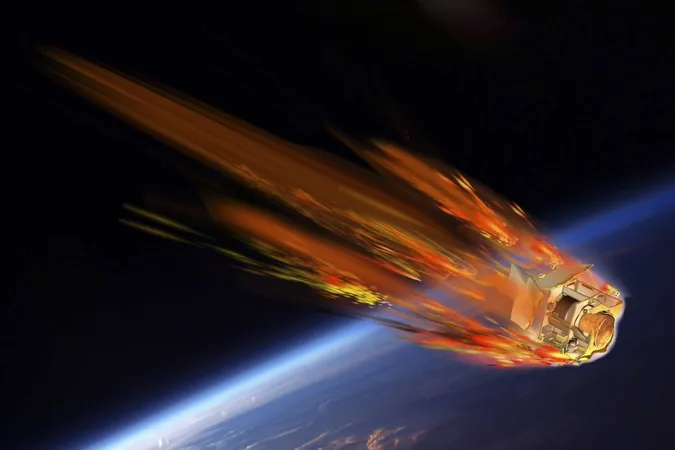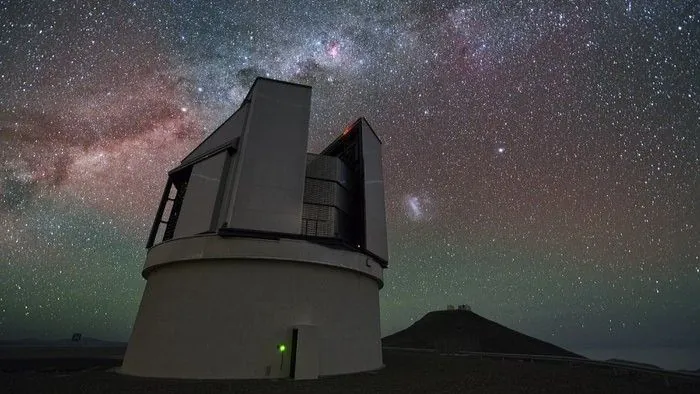
This Satellite Is Set to Self-Destruct for Groundbreaking Science – Here’s Why It Matters!
2024-09-25
Introduction
In a groundbreaking mission poised to challenge our understanding of spacecraft reentry, the European Space Agency (ESA) is readying a unique satellite, humorously dubbed the Destructive Reentry Assessment Container Object (DRACO). This washing-machine-sized marvel is not only designed to gather crucial data on its own fiery demise, but it will also play a pivotal role in tackling the mounting crisis of space debris orbiting our planet.
Mission Overview
Set to launch in 2027, DRACO will embark on a brief but daring journey, diving back into Earth's atmosphere shortly after its departure. Weighing in at approximately 440 pounds (200 kilograms), this satellite features no propulsion system and is devoid of navigation or communication technology. Its sole purpose? To collect invaluable data during its dramatic reentry and subsequent disintegration.
Importance of the Mission
“What we’re aiming to achieve with this mission is crucial for the future of space exploration,” stated Holger Krag, ESA’s head of space safety. “Understanding the reentry process is vital for designing satellites that are not only efficient but also mitigate the growing problem of space junk. The insights we gain from DRACO will drive the innovation needed for the creation of more demise-friendly spacecraft by the end of the decade.”
Technical Specifications
To facilitate the data collection, the satellite is built with a destructible frame enclosing an indestructible capsule. This capsule is the technological heart of the mission, engineered to withstand extreme conditions during reentry while housing essential sensors and cameras. “Our goal is for DRACO to be as representative as possible of an average low-Earth orbit spacecraft,” explained Stijn Lemmens, the project manager at ESA’s Space Debris Office. “We want to maximize the data collected during reentry, converting destruction into a learning opportunity.”
Mission Duration and Execution
The duration of DRACO's mission will be brief but intense, lasting around 12 hours and reaching a maximum altitude of 621 miles (1,000 kilometers). Upon reentry, it will plunge into an uninhabited oceanic area, capturing its own spectacular destruction with four onboard cameras and an extensive array of 200 sensors.
Post-Mission Data Collection
After its catastrophic breakup, the data capsule will deploy a parachute for a gentle descent, allowing a 20-minute window to transmit critical information back to a geostationary satellite before performing a splashdown.
Conclusion
Despite its ephemeral existence, DRACO’s mission could yield transformative insights that not only enhance our understanding of reentry science but also help us devise strategies to manage the increasingly congested realm of space. As humanity continues to venture into the cosmos, initiatives like DRACO remind us of the importance of sustainability in our endeavors beyond Earth — because if we don’t address the issue of space debris now, it could spell disaster for future generations of explorers!



 Brasil (PT)
Brasil (PT)
 Canada (EN)
Canada (EN)
 Chile (ES)
Chile (ES)
 España (ES)
España (ES)
 France (FR)
France (FR)
 Hong Kong (EN)
Hong Kong (EN)
 Italia (IT)
Italia (IT)
 日本 (JA)
日本 (JA)
 Magyarország (HU)
Magyarország (HU)
 Norge (NO)
Norge (NO)
 Polska (PL)
Polska (PL)
 Schweiz (DE)
Schweiz (DE)
 Singapore (EN)
Singapore (EN)
 Sverige (SV)
Sverige (SV)
 Suomi (FI)
Suomi (FI)
 Türkiye (TR)
Türkiye (TR)